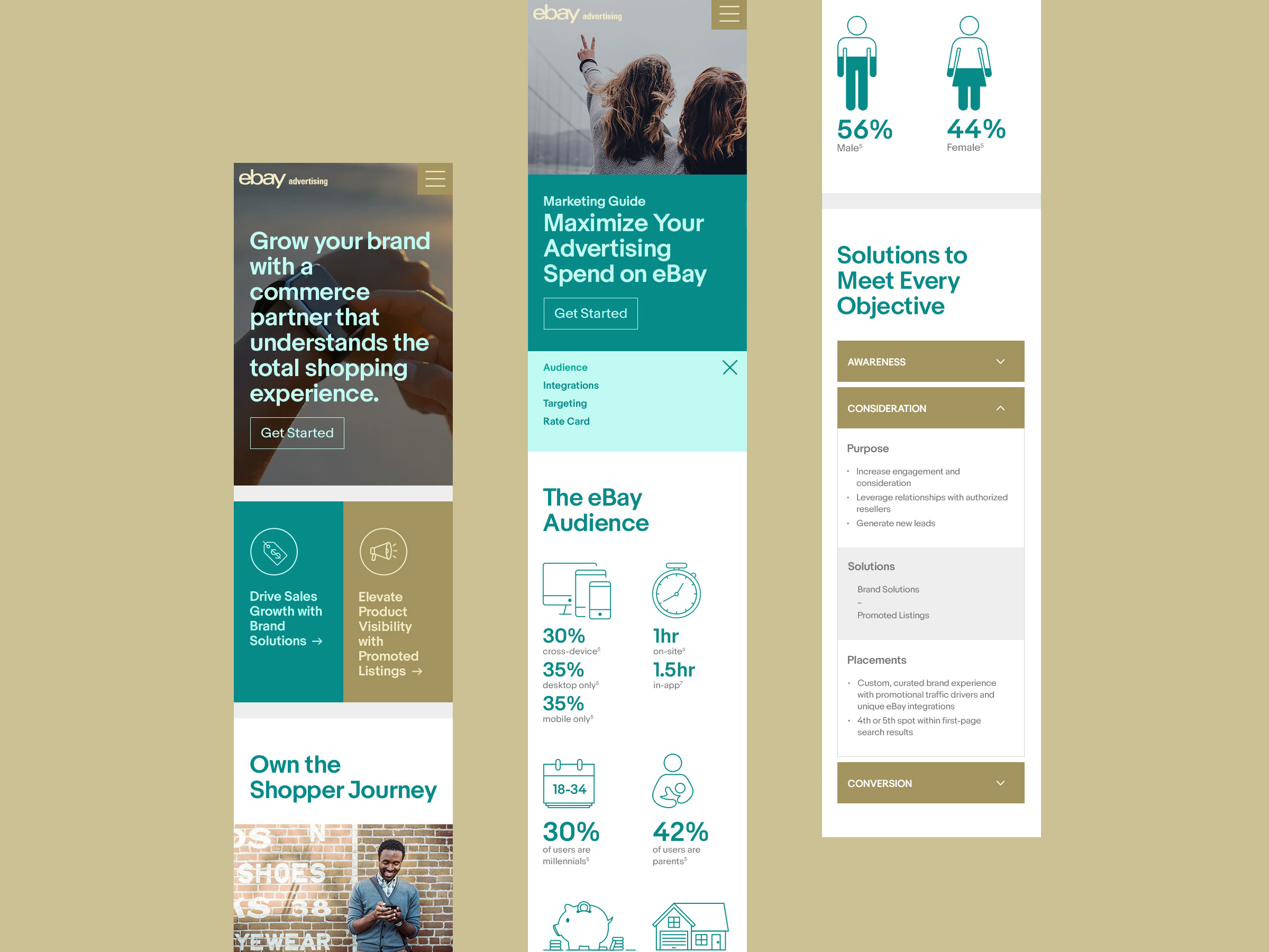Background
Following the success of a digital transformation initiative at PwC, there was an opportunity to share the wealth of automations that had been developed internally with our external clients. These digital assets were built leveraging PwC’s technical and functional domain expertise. The challenge was to productize what had thus far been a high-touch service offering, providing real value and time saving benefits to teams at scale in an easy-to-use self-service package.
Role
As the first dedicated UX designer on a freshly formed Commercialization team at PwC which operated a lot like a startup, I was responsible for delivering UX artifacts during the PoC phase, including competitive research, personas, concepts, prototypes, etc; and designed the majority of the MVP product we launched.
Standing up the MVP involved creating a design language in line with PwC’s Appkit design system and brand guidelines, helping to define CMS content templates, setting up a design handoff process, conducting design QA and supporting UAT testing.
Approach
Early insights indicated user adoption would be driven by the ease of finding and getting started with the right tools to execute routine and targeted functional tasks.
The MVP would encompass a scalable catalog search and browse functionality initially focused on task and technology filters to help navigate the sizable inventory of assets, as well as a pilot finance process framework with mapped assets.
The item detail pages would feature overviews, demos and how-to support material for downloadable assets. In addition, select server-side solutions would be available as a guided walkthrough experience without the need to license or use any third party automation technology.
Demo flows used for PoC validation and stakeholder alignment
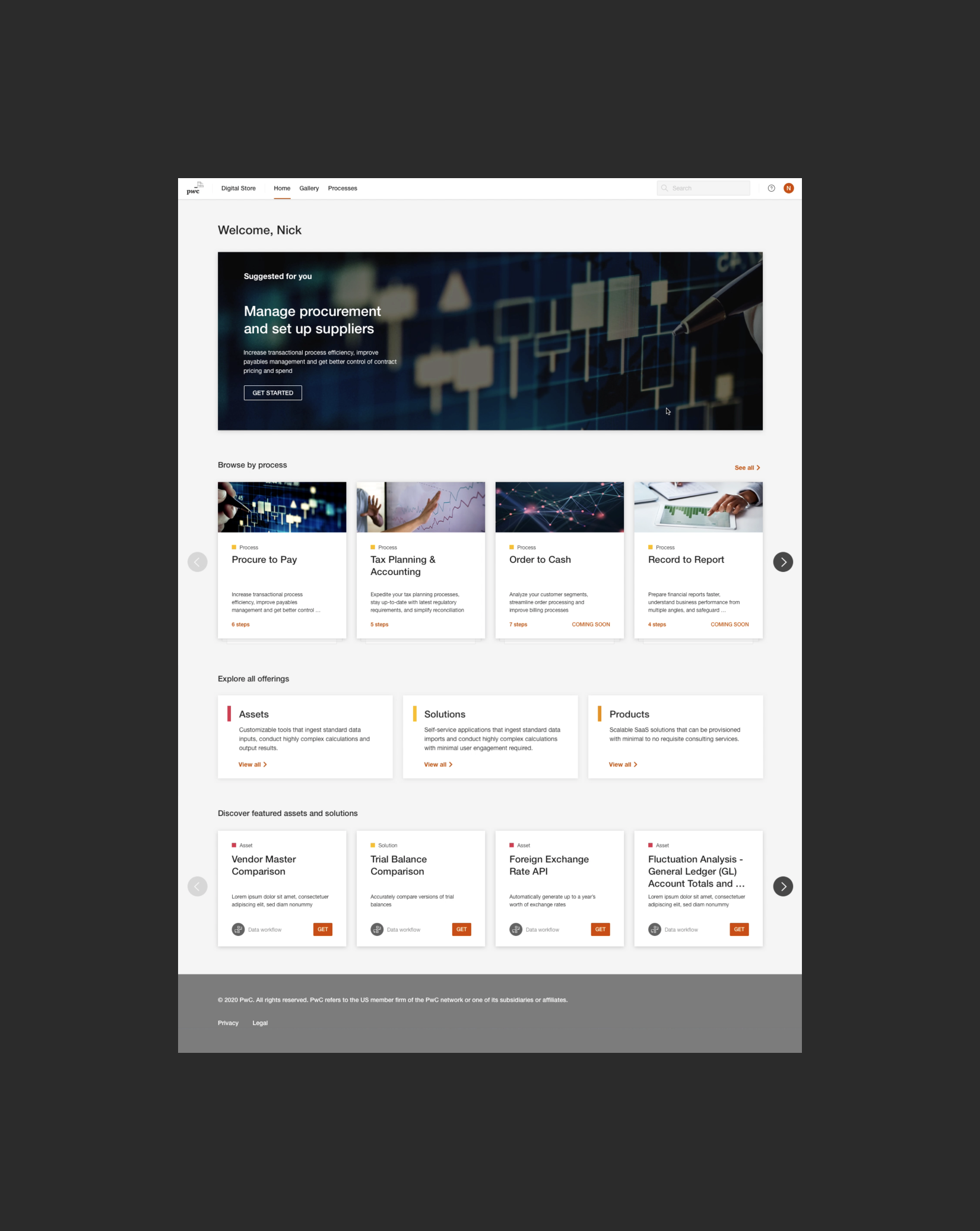
Logged in homepage with featured processes, an overview of offerings and featured inventory (MVP)
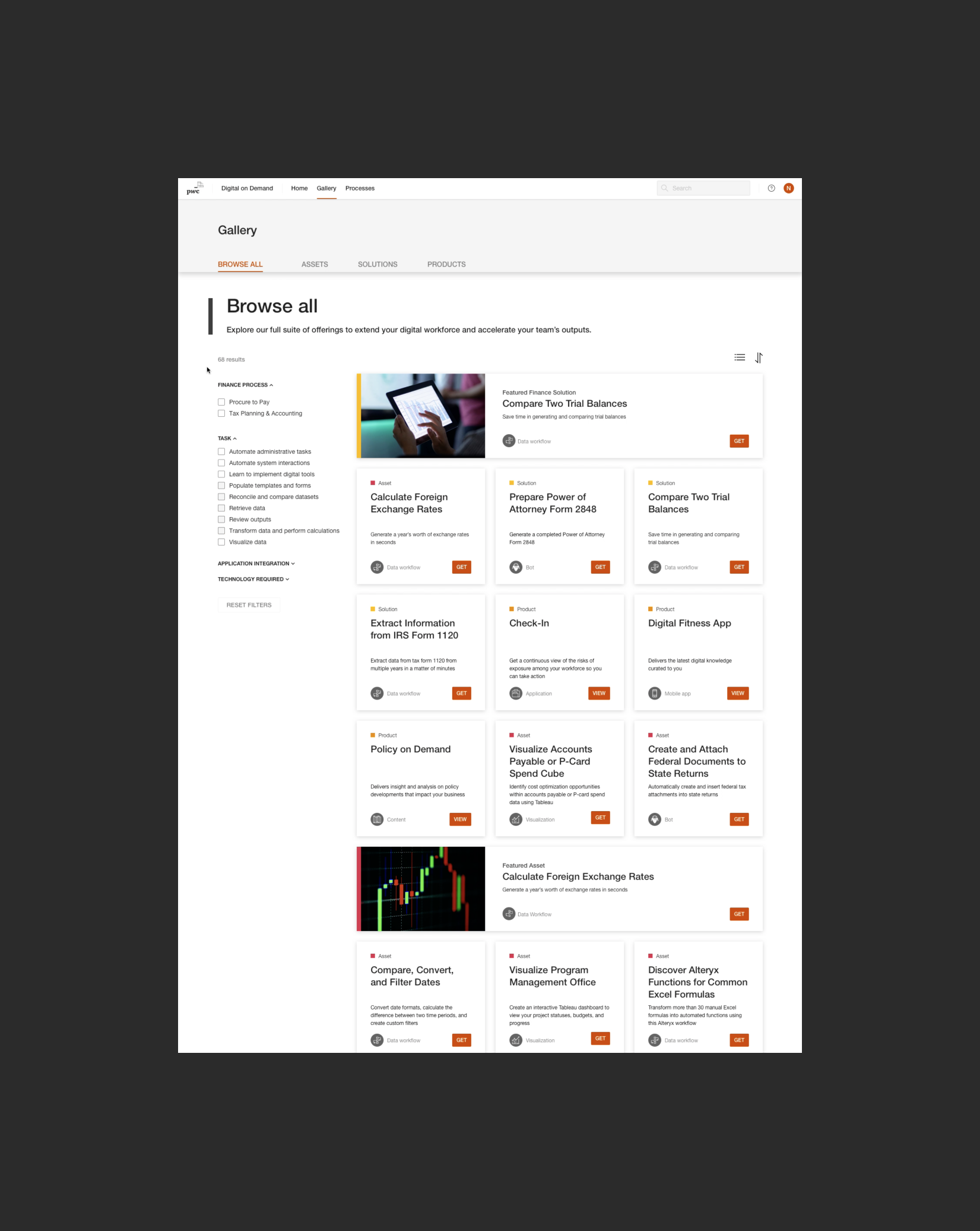
Inventory gallery with filters
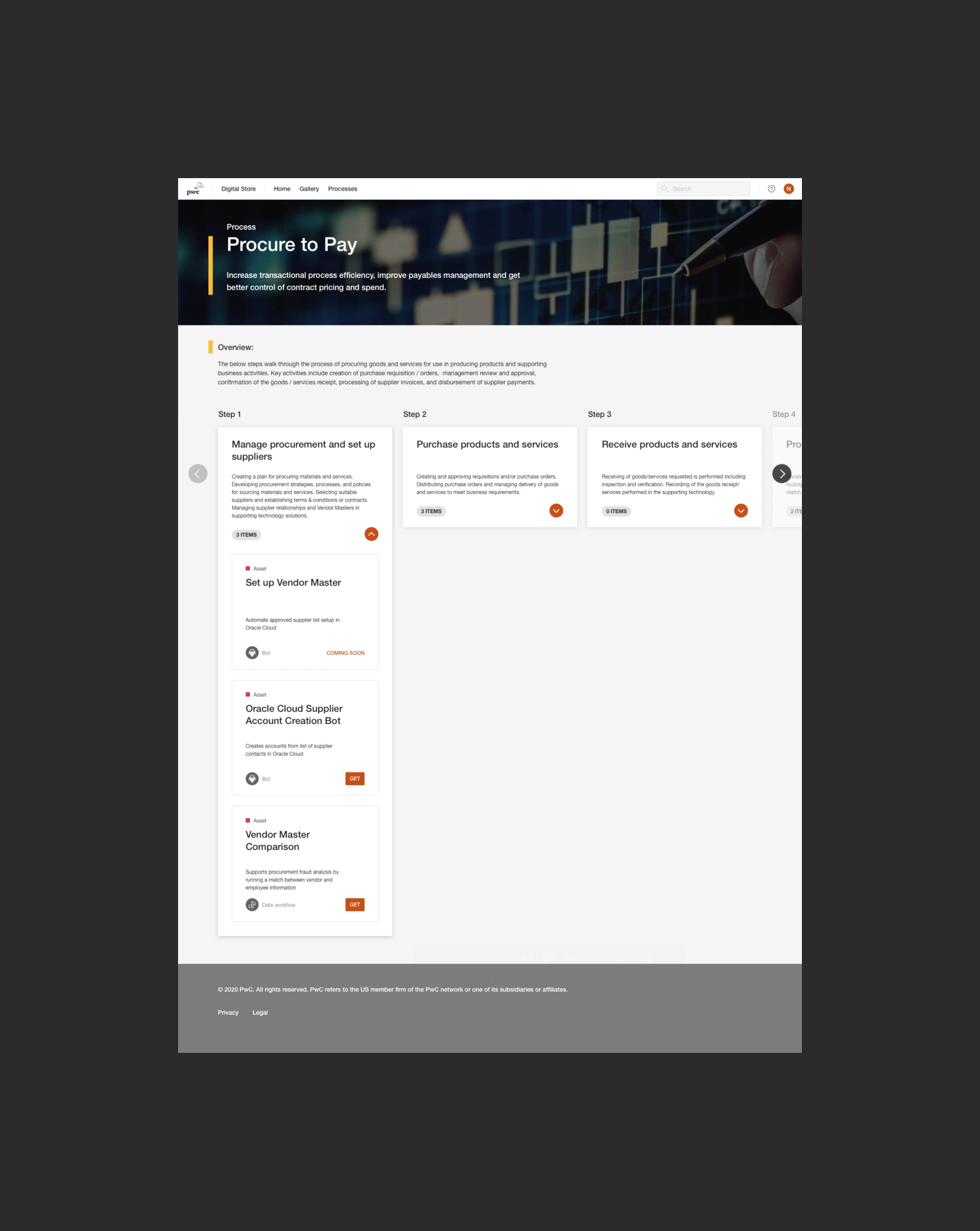
Process mapping
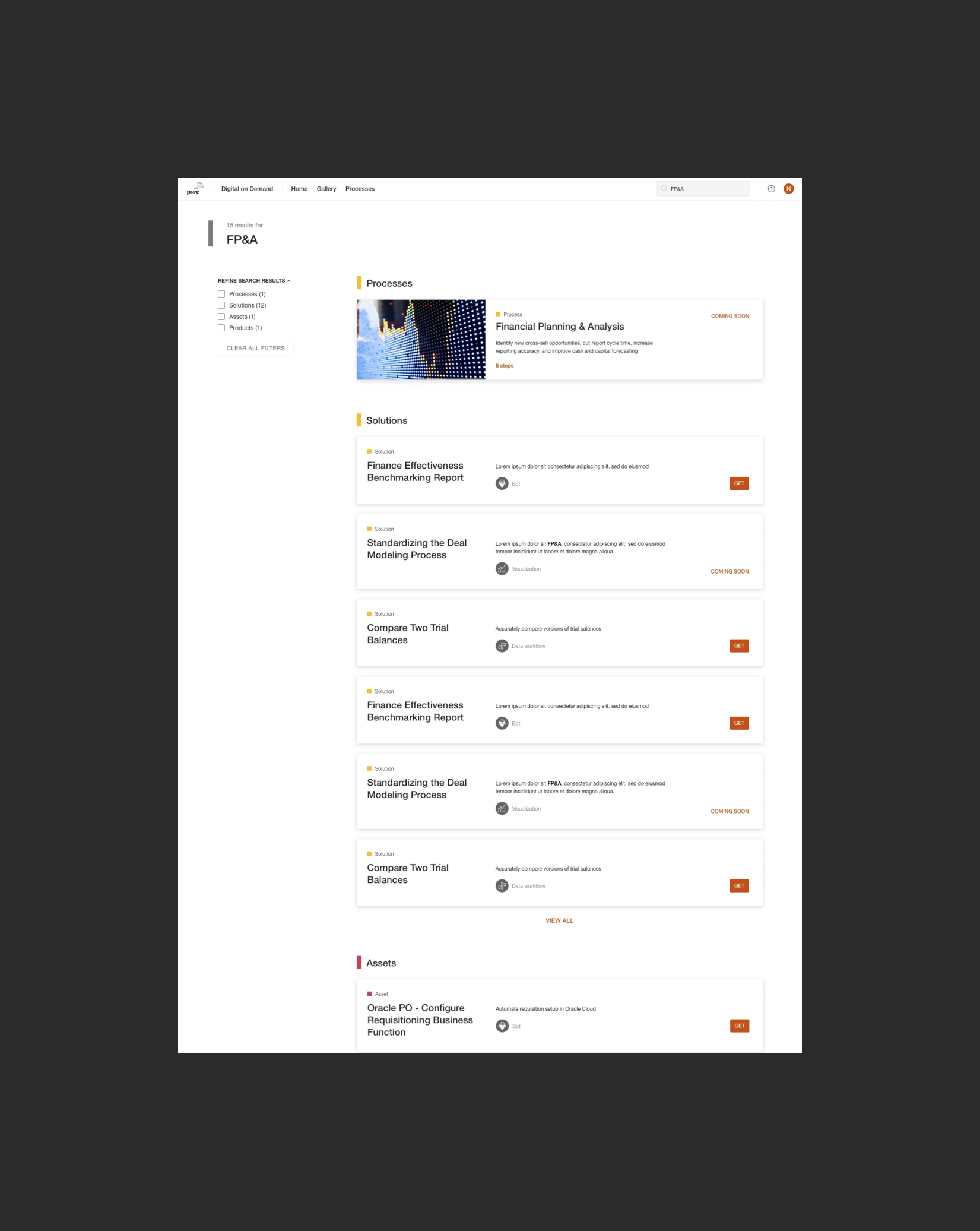
Search results sorted by result type
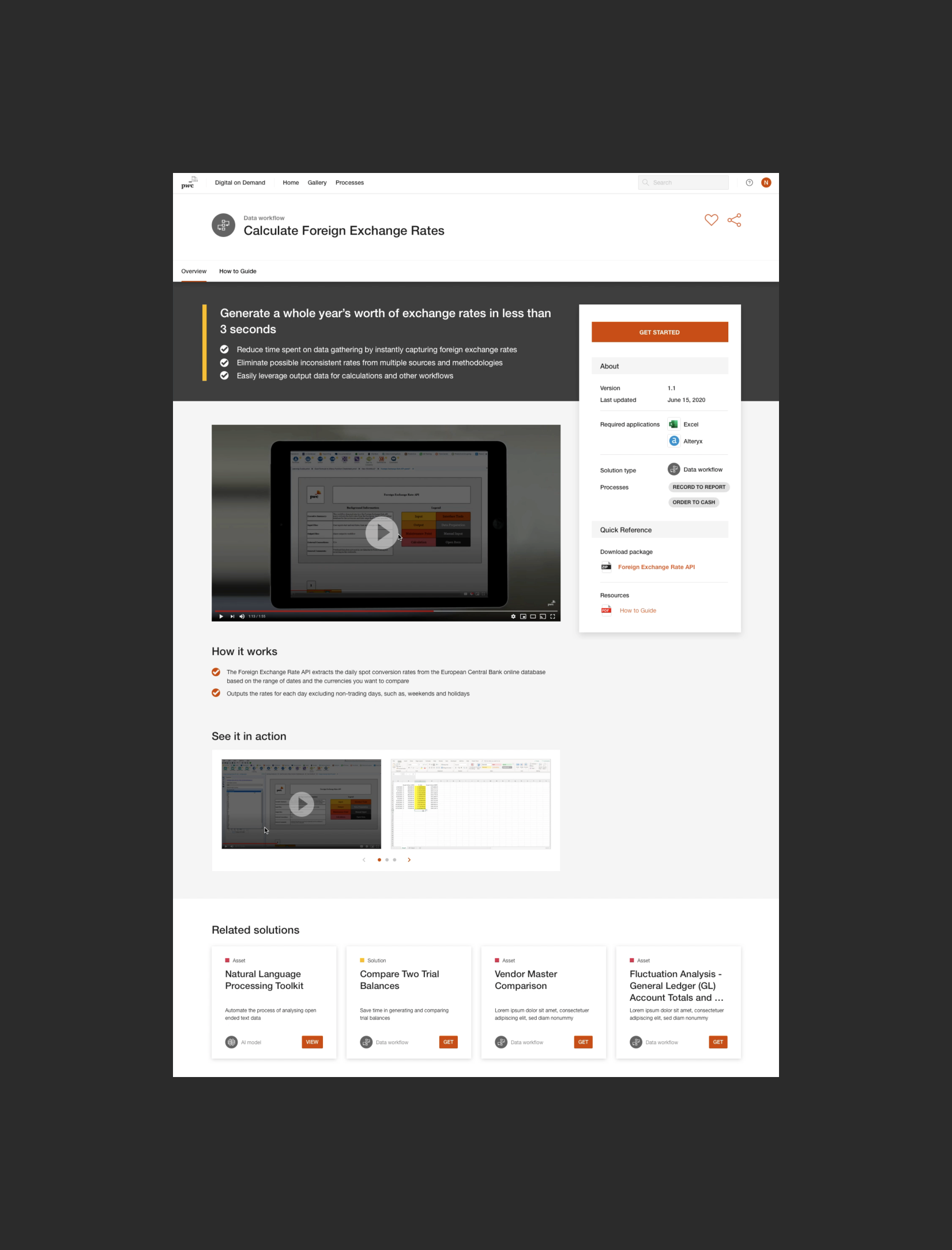
Asset detail page
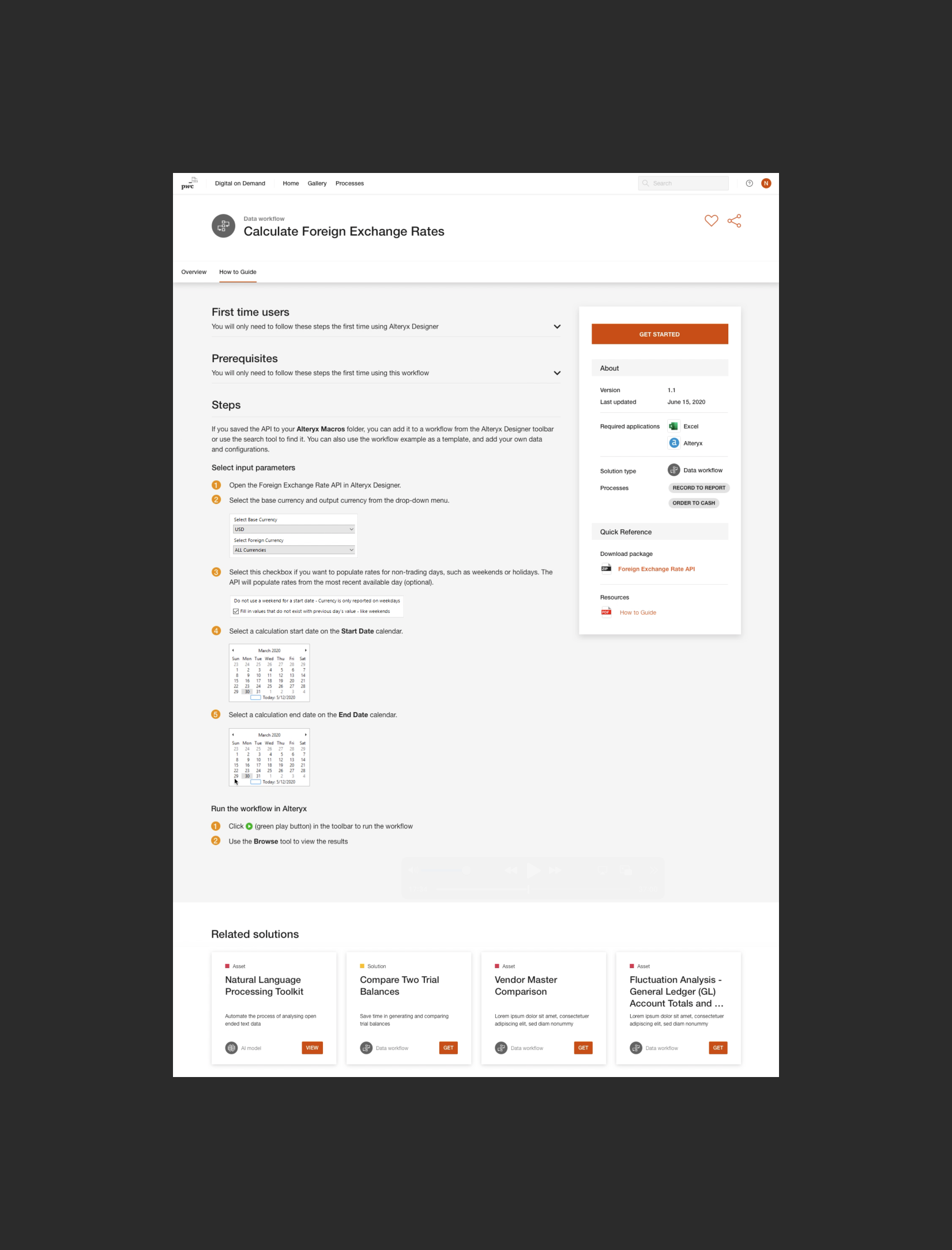
Asset documentation
In close collaboration with PM, tech and inventory leads, I designed a system of “Lego block” modules that could be sequenced and configured as needed to set up and execute a wide range of cloud-based automations.
Example of guided steps used to run cloud-based AI models and automations
Outcome
The tools and processes I introduced into our workflow helped facilitate smooth cross-functional collaboration and alignment early on, as well as onboarding as our team grew.
"Lego blocks" allowed us to define the requirements for a given cloud-based solution and implement it within a sprint.
The client base, inventory, our team and product features grew at an impressive rate, providing ample opportunities to learn, grow and flex my product muscles by leading two design pods and playing an active role in roadmap planning and drafting user stories.


